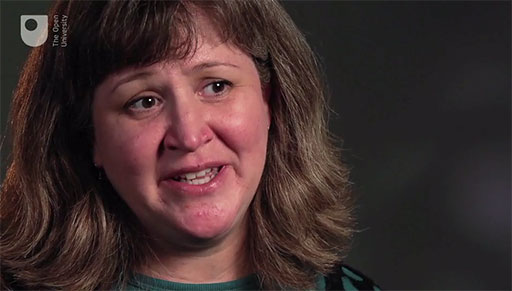2 Our Moon and its craters
Galileo discovered lunar craters in the 1600s but the debate about how they were formed was resolved only in the 20th century. Learn how different crater shapes and sizes come about, and have a go at classifying real Moon craters.
In this video Christine Shupla and Paul Schenk introduce you to the Moon, the craters upon it and the evidence for ancient volcanism. Christine concludes by speculating that pieces of rock that ‘blew off early Earth’ might one day be found on the Moon. By this, she means chunks of ejecta thrown out by large impacts onto the Earth (of the same size as those that formed the Moon’s oldest craters), and which ended up on the Moon. No rock older than 3.8 billion years has survived on Earth, so finding older Earth rocks on the Moon opens a very important window into our own planet’s past.

